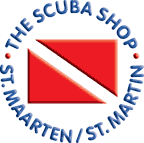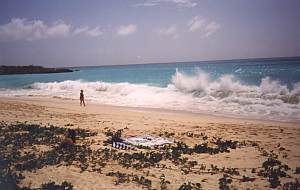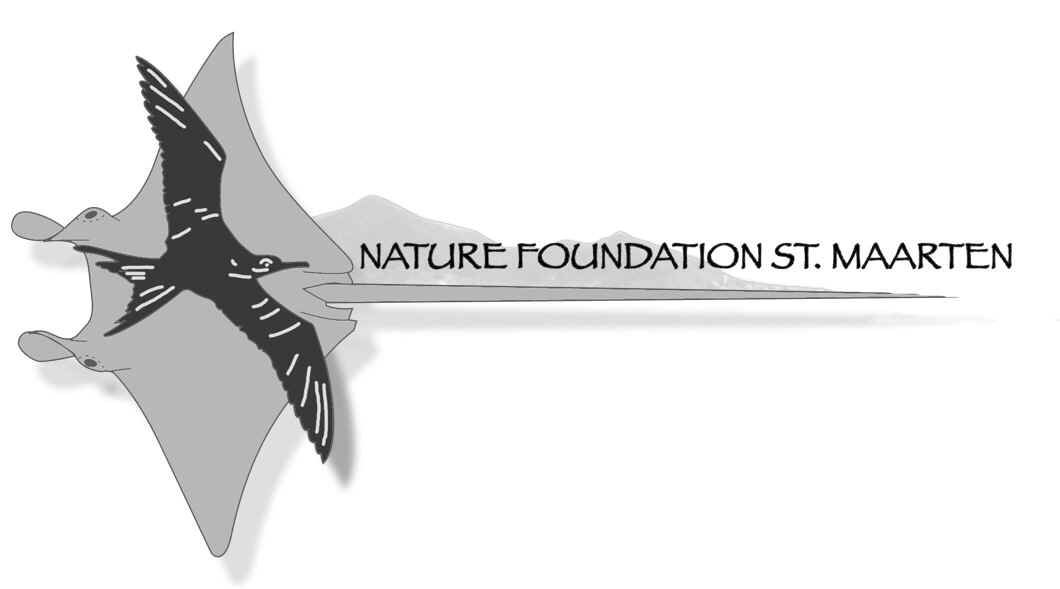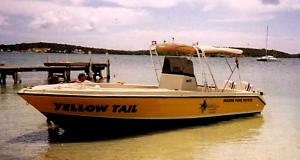
THE SCUBA SHOP |
|
|
ST. MAARTEN MARINE PARK
CORAL REEFS
Coral Reefs are concentrated at the east/southeastern part of the island where they are
located relatively close to shore. The reef starts at an approximate depth of 25-60 ft,
and begins 2 or 3 kilometers offshore. The reefs around Sint Maarten are not as diverse
and varied as other islands, but there is a large abundance of about 20 main target
species of coral. The coral reefs are extremely valuable to the island. Among the reef
area, which is a spur-and-groove formation (Patch Reef), there is a large variety of
Caribbean fish and invertebrates where they breed and interact. Around the reef patches,
which look mostly like finger-like protrusions, fish and invertebrates can breed, thereby
replenishing the fish stock in the surrounding waters. The main concentration of reef
(besides the 3 islands, mentioned below) is located around the Great Bay area, several
kilometers south of Philipsburg.
 |
Brain
coral (Diploria strigosa) on Proselyte Reef in the St. Maarten Marine Park conservation
zone |
There are many dive and
fish areas to be found here, as well as an underwater historical site (Proselyte Reef),
and an old Spanish Galleon sitting at approx., 25-30ft of water. This historical site is
visited year-round by diving tourists, and makes up a large part of the total dive tourism
on the island. The entire coral reef located south of Great Bay extends on an average to
about 10-15 square kilometers.
Seagrass Beds can be found at the south side of the island in relatively untouched areas.
Due to heavy wind and wave actions and coral reefs, seagrass beds are not found on the
east side of the island, however they can be found from Great Bay area extending all the
way to Cupecoy Beach. It cannot be emphasized enough how important seagrass beds are to
the marine environment. Seagrasses help protect the area by stabilizing sediment,
contributing to water quality, providing food and shelter to marine life, and breeding
grounds for marine creatures such as lobsters and conch, They also provide hurricane
protection through sand stabilization. Conservation of the healthy seagrass areas and
recovery of the damaged seagrass beds should be taken very seriously.
MANGROVES
The Dutch Side of Sint Maarten does not have a dense population of mangrove communities.
The larger area of mangrove coverage is around the Simpson Bay Lagoon and Oyster Pond.
Mangroves are an important part of the Lagoon ecosystem, for it provides the breeding
grounds and nursery for fish and shrimp, conch and lobster. Mangroves also work as a
filtering device for organic materials and sediments. It also protects the shoreline and
serves as shelter for many small shoreline creatures. There is ample ground to conserve
the remaining spots of mangroves on the Dutch Side, to try to recover their state and
health and increase the areas of their occurrence where possible and practical.
 |
Beaches
such as Maho Beach, Mullet Bay, Pointe Blanche, and Guana Bay are nesting grounds for
Hawksbill turtles. |
BEACHES/SHORESIDE
At the shoreside, the Marine Park is bordered by the
line parallel to the coastline, located inland 25 meters behind the high tide mark at a
rocky coast, and 50 meters behind the high tide mark at a beach. These measures are based
on standards set by the Executive Council in a Public Notice concerning the use of
beaches. The policy states: ”The strip of sand with a width of at most 50 meters, of
which the surface consists of natural sea sand, situated along the sea, or in absence of
natural sea sand, the strip of land with a width of 25 meters from the high-waterline,
situated along the public waters”. The main objective of the policy is protection of
the recreational value of the beaches. Besides that, the nature value of the beaches
should be protected as much as possible. If necessary the nature value of a certain beach
can possibly temporarily be placed above the recreational value.
SIMPSON BAY LAGOON & OYSTER POND
|
The
Patrol boat of the |
The Simpson Bay Lagoon and
Oyster Pond are valuable areas with respect to both nature conservation and fisheries. In
particular Simpson Bay Lagoon is important as nursery area for fish. Consequently, it is
of importance that these areas be included in the park. Zoning of these areas, however is
complex because of the many different stakeholders and uses such as fisheries, navigation,
and anchoring by yachts, recreation, airport and nature conservation. More insight
needs to be obtained regarding the desired use of the Lagoon. The aim is to have separate
zoning plans for the Lagoon and Oyster Pond after the Zoning of the Marine Park is
implemented. Apart from being a breeding grounds for fish, lobster, and conch the Simpson
Bay Lagoon also harbors mangrove population, seagrass beds. At the same time there is boat
traffic and it is used as hurricane safe haven
SEA BIRDS
The islands "Hen & Chicks", "Cow & Calf", "Pelican
Rock", and "Molly B’Day" are breeding grounds for many species of
birds, including pelicans, frigate birds, and tropic birds. The islands are high energy
wave action areas, perfect for coral reef formation.
Sint
Maarten Nature Foundation |
MORE INFORMATION |
The Sint
Maarten Nature Foundation & Marine Park
The Marine Park | The Nature Foundation | Park Zoning
Sectie Milieu en Natuur Departement van
Volksgezondheid en Milieuhygiene
(Official Site of The St. Maarten Nature Foundation - English / Dutch)
MARINE PARK ARTICLES and UPDATES |
Rescuing a
Green Sea Turtle - June 22, 2000
On June 21st, 2000 on a weekly patrol, the staff of the Marine Park
(Nature Foundation of Sint Maarten) encountered a Green Turtle (Chelonia mydas) floating
on a large tar/oil spill close to Proselyte Reef........
Update to:
Rescuing a Green Sea Turtle - July 20, 2000
I just wanted to let you
know.... rescued Green turtle sited....
Global
and Local Seagrasses Threatened - April 6, 2000
It is difficult to emphasize how important seagrasses are to the marine
environment.......
Reef Monitor
Update

